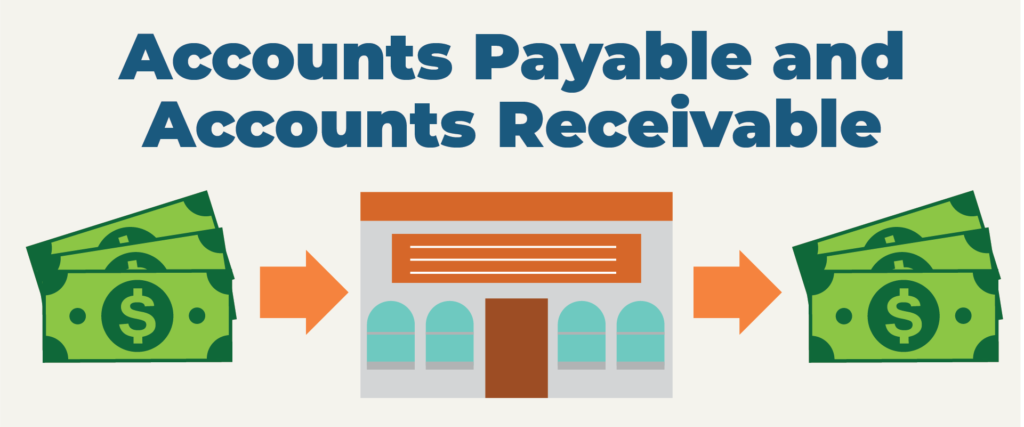
When running a business, managing finances efficiently is crucial to success. A key aspect of this management is understanding the diff between accounts payable and receivable. Both terms are foundational in accounting and financial management, yet they represent different aspects of a company’s financial flow. In this blog post, we will break down the diff between accounts payable and receivable to help you gain a better understanding of these critical concepts and how they impact your business.
What is Accounts Payable?
Accounts payable (AP) refers to the money that a company owes to its suppliers, vendors, or other creditors. It represents short-term debt that needs to be paid within a certain period, usually 30 to 90 days. When a business purchases goods or services on credit, the amount due is recorded as accounts payable. Essentially, accounts payable is a liability on the company’s balance sheet, reflecting the money the company has to pay out.
For example, if a company buys office supplies on credit, the amount due is considered accounts payable until it is paid. The company has to settle this debt with the supplier within the agreed-upon time frame, or it may face penalties, fees, or strained relationships with the supplier.
What is Accounts Receivable?
On the flip side, accounts receivable (AR) refers to the money a business is owed by its customers for products or services delivered but not yet paid for. This represents an asset on the balance sheet because it is money the company expects to receive. When a business sells products or services on credit, the amount owed by the customer is recorded as accounts receivable.
For instance, if a company provides a service to a client and allows them to pay at a later date, the amount the client owes becomes accounts receivable for the company. The business expects to receive the payment within a specified period, typically 30 to 60 days.
The Diff Between Accounts Payable and Receivable
Now that we’ve established what accounts payable and receivable are individually, let’s dive into the diff between accounts payable and receivable. The most obvious difference lies in the nature of the transactions they represent:
- Accounts Payable: Represents amounts owed by the business to third parties. It is a liability for the company and requires payment in the near future.
- Accounts Receivable: Represents amounts that customers owe to the business. It is an asset for the company and is expected to result in future cash inflows.
Both accounts are integral parts of a business’s cash flow cycle, but the direction of money differs. Accounts payable reflects the outflow of money, while accounts receivable reflects the inflow.
How Accounts Payable and Receivable Affect Cash Flow
The diff between accounts payable and receivable also becomes evident when you consider their impact on a company’s cash flow. Cash flow is critical to the survival and growth of any business, and managing both accounts payable and receivable can significantly affect it.
- Accounts Payable and Cash Flow: A company may want to extend the time it takes to pay off its accounts payable in order to hold onto its cash longer. This strategy can be effective in maintaining liquidity, but it must be balanced. If payments are delayed too long, the company could face penalties or damage its supplier relationships.
- Accounts Receivable and Cash Flow: On the flip side, a company aims to collect on its accounts receivable as quickly as possible. The faster customers pay, the more liquid the business will be, which can be reinvested into operations, growth, or debt repayment. However, if customers delay payments, it can create cash flow challenges for the business.
In short, the diff between accounts payable and receivable lies in whether money is coming in or going out, and effectively managing both is crucial for maintaining healthy cash flow.
Timing and Impact on Business Operations
Another significant diff between accounts payable and receivable is how they impact the timing of business operations. The timing of accounts payable and receivable directly influences a company’s ability to meet obligations and make investments.
- Accounts Payable: Since accounts payable represents money the company owes, delays in payments can lead to penalties and damage the company’s creditworthiness. Additionally, companies that do not manage accounts payable effectively risk harming their relationships with vendors, which may result in fewer favorable terms or loss of business.
- Accounts Receivable: On the other hand, timely collection of accounts receivable ensures that a company can reinvest the funds into its operations. Delays in receiving payments can negatively impact a company’s ability to pay its own bills, leading to further cash flow problems. Companies can offer discounts or incentives to encourage early payments from customers and maintain a steady cash inflow.
The Role of Aging Reports
The diff between accounts payable and receivable becomes even more evident when we look at aging reports. These reports are used by businesses to track the time that has elapsed since invoices were issued or received. Both accounts payable and accounts receivable have aging reports that help companies monitor the status of outstanding payments and debts.
- Accounts Payable Aging Report: This report tracks how long the company has had outstanding debts to its creditors. It helps the business plan when to make payments and identify any overdue amounts that need to be paid immediately to avoid late fees.
- Accounts Receivable Aging Report: This report shows how long customers have taken to pay their outstanding invoices. It helps businesses prioritize collections and follow up with customers who have overdue payments.
Both reports are essential tools in managing the diff between accounts payable and receivable, ensuring the business maintains a healthy cash flow.
How to Manage Accounts Payable and Receivable Effectively
Understanding the diff between accounts payable and receivable is one thing, but managing them effectively is another. Businesses need to employ strategies to optimize both sides of the ledger to ensure smooth operations. Below are a few tips on how to manage accounts payable and receivable effectively:
- Automate Processes: Use accounting software to automate invoicing, payments, and collections. This can reduce human error and speed up the process of tracking both accounts payable and receivable.
- Establish Clear Payment Terms: Set clear payment terms with both suppliers and customers. This reduces confusion and sets expectations for when payments are due.
- Monitor Aging Reports: Regularly review accounts payable and receivable aging reports to stay on top of overdue amounts. Follow up promptly on overdue accounts receivable and settle accounts payable before they become overdue.
- Negotiate Payment Terms: Negotiate favorable payment terms with suppliers, and offer early payment discounts to encourage faster payments from customers. This can improve cash flow and reduce the risk of late payments.
- Create a Cash Flow Forecast: Develop a cash flow forecast to predict periods of high and low cash flow. This can help you plan for large accounts payable and ensure you have enough liquidity to cover them.
Conclusion: The Bottom Line on the Diff Between Accounts Payable and Receivable
Understanding the diff between accounts payable and receivable is essential for effective financial management in any business. While accounts payable represents money the company owes to others, accounts receivable represents money owed to the company. Both play a critical role in a business’s financial health and cash flow management.
By managing accounts payable and receivable efficiently, businesses can ensure that they have enough liquidity to cover expenses, invest in growth, and avoid late fees or damaged relationships. The ability to differentiate between these two and manage them strategically is a cornerstone of strong financial management that keeps businesses running smoothly.
In short, the diff between accounts payable and receivable is not just about terminology—it’s about understanding how to maintain a balance of inflows and outflows to ensure business sustainability and growth.
